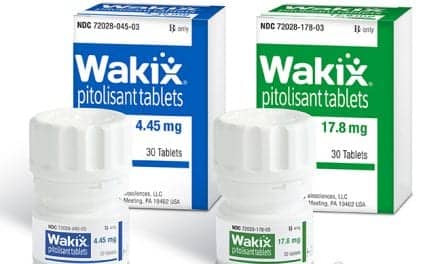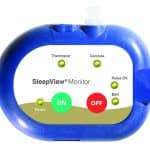Researchers analyze Xywav and Xyrem’s population pharmacokinetic and exposure-responses, shining light on the dosing and titration of oxybates.
By Sree Roy
When starting people with narcolepsy and idiopathic hypersomnia on oxybates, sleep physicians know to individualize the treatment dosing based on each patient’s response as well as personal preference. A new study presented at SLEEP 2024 reinforces the importance of individualized dosing for twice-nightly low-sodium oxybate (brand name Xywav) and original sodium oxybate (brand name Xyrem).
Xywav and Xyrem are approved for the treatment of cataplexy or excessive daytime sleepiness in patients 7 years of age and older with narcolepsy, and Xywav is also approved for idiopathic hypersomnia in adults.
“We’re excited to see evidence suggesting that the unique pharmacokinetic profile of low-sodium oxybate allows for individualized dosing, which may enhance tolerability and enable more patients to reach an efficacious dose,” says Cuiping “Tracy” Chen, PhD, executive director of global clinical pharmacology & pharmacometrics at Jazz Pharmaceuticals, marketer of Xywav and Xyrem, and a study author.
Both Xywav and Xyrem are administered twice nightly at a recommended total nightly dosage of 6 to 9 grams in adult patients with narcolepsy or idiopathic hypersomnia. For patients with idiopathic hypersomnia, Xywav can alternately be dosed as once nightly up to 6 grams.
Individualized dosing and titration can optimize the patient experience by maximizing efficacy while limiting adverse events such as nausea, vomiting, and enuresis. “Dosing flexibility in how to divide the two nightly doses, the interval between the two doses, and what is the appropriate incremental increase during the titration is clinically useful based on each patient’s unique situation and clinical response,” Chen says of these oxybates, which can be titrated with an incremental increase in dose with precision down to 0.25 grams.
Chen’s study analyzed the pharmacokinetic response of 70 patients with narcolepsy and idiopathic hypersomnia. It also analyzed the exposure-response of more than 800 patients (about 240 from two phase 3 studies of Xywav and the rest from Xyrem’s phase 3 narcolepsy trials).

Pharmacokinetic Response to Oxybates
The population pharmacokinetic analyses found substantial interpatient variability of oxybate pharmacokinetics.
In the narcolepsy model, the interindividual variabilities associated with key clearance and absorption parameters ranged from 42.9% to 83.8%. In the idiopathic hypersomnia model, they ranged from 52.7% to 57.9%.
Exposure-Response to Oxybates
Exposure-response analyses also demonstrated interindividual variability in response to oxybate treatment.
In randomized parallel-group narcolepsy studies, all efficacy endpoints showed improvements linked with higher oxybate exposure. No other covariates (such as age, race, sex, or body weight) were significant. In randomized withdrawal studies, exposure-response relationships for cataplexy change (in people with narcolepsy) and Epworth Sleepiness Scores (in people with narcolepsy and idiopathic hypersomnia) were flat, “indicating that there is a range of effective concentrations and that different patients require different doses to achieve an optimal response,” write the abstract authors.
Study Takeaways
The analyses identified fed/fasting status and body weight as possible reasons for the large interpatient variability. “The delayed absorption under fed compared with fasted dosing conditions are common for many drugs, which is likely due to slowed gastric motility under fed than the fasted conditions,” Chen says. “A greater body weight associated with higher clearance means a person with a higher body weight eliminates the drug from the body faster, leading to lower blood concentrations than a lower body weight person. Because patients with narcolepsy or idiopathic hypersomnia have a wide range of body weights, this means each patient handles and responds to the drug differently, which calls for individualized dosing.”
Together, these modeling analyses highlight the need for individually optimized oxybate dosing in narcolepsy or idiopathic hypersomnia to achieve the best response for each patient.
Illustration 110318984 © Skypixel | Dreamstime.com









